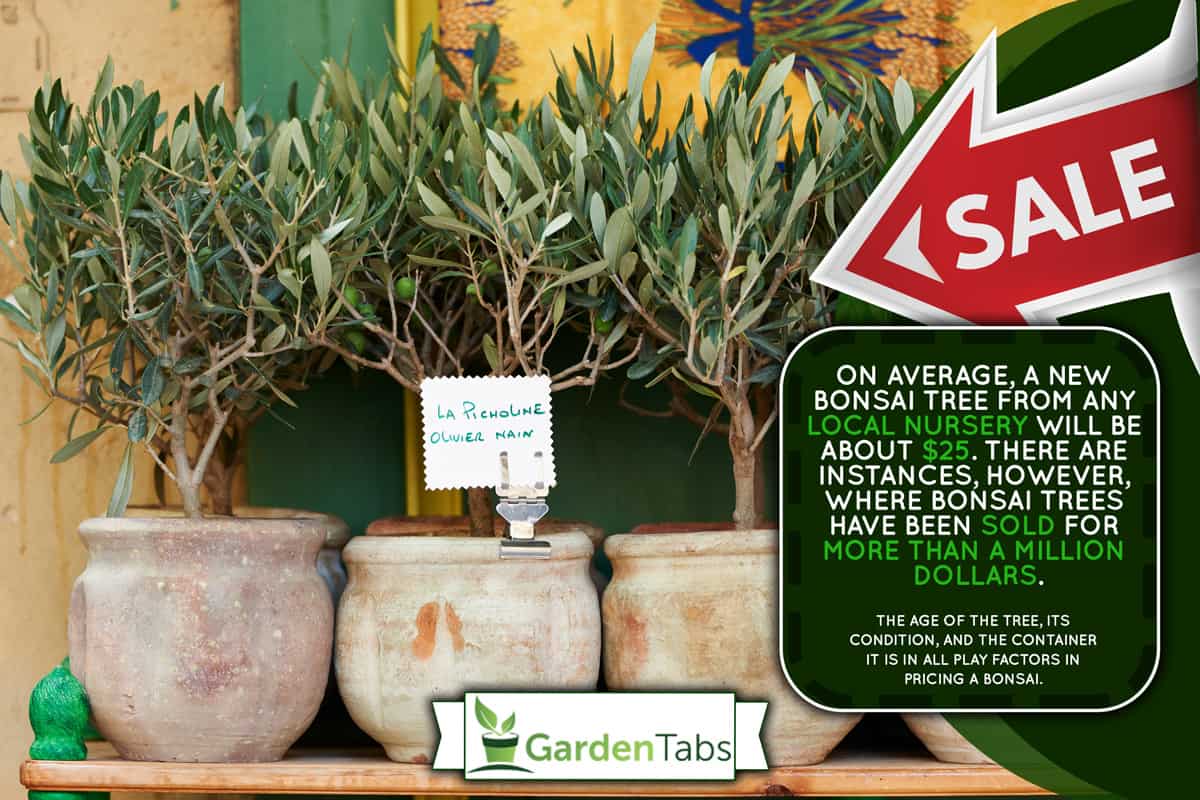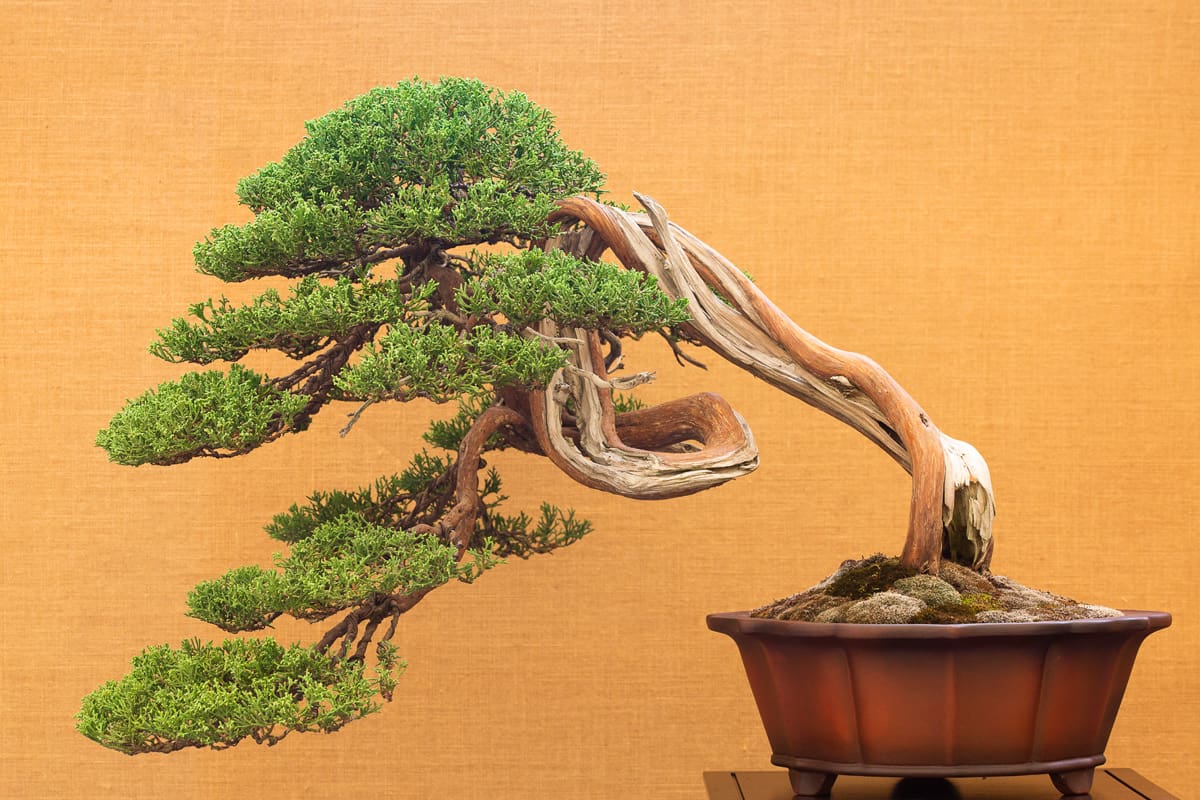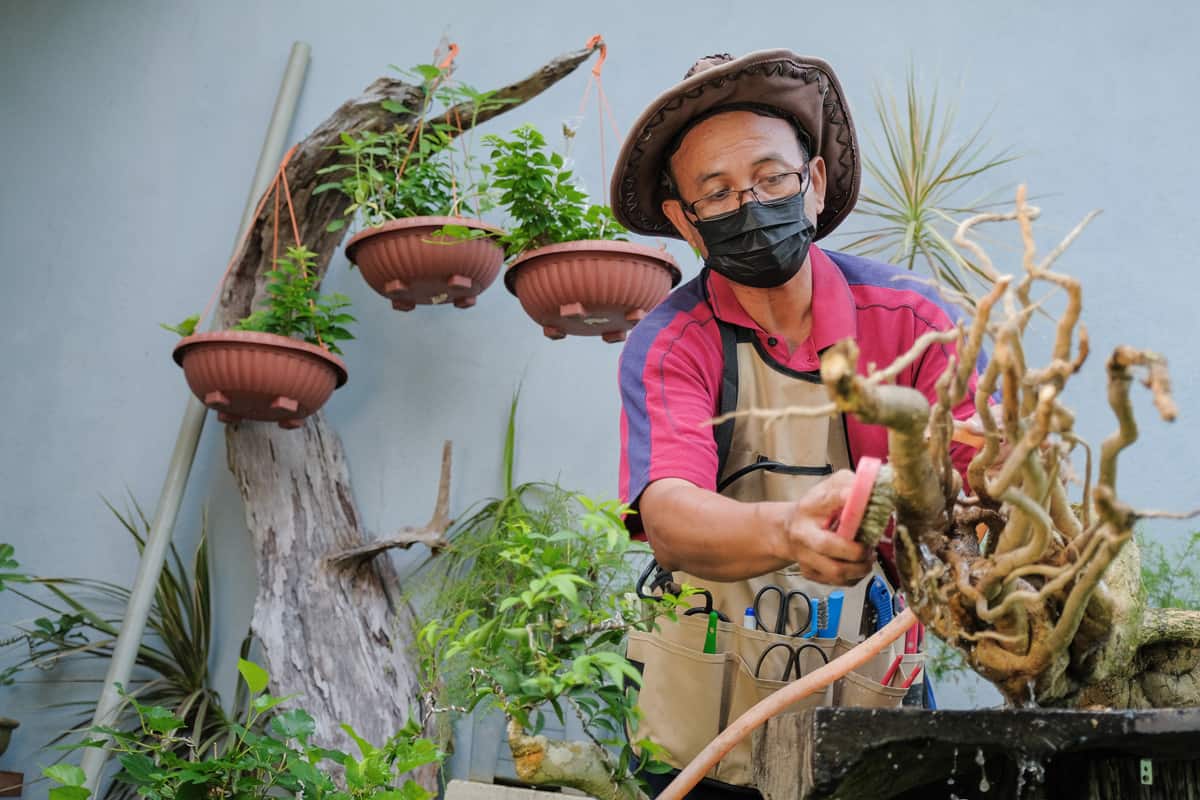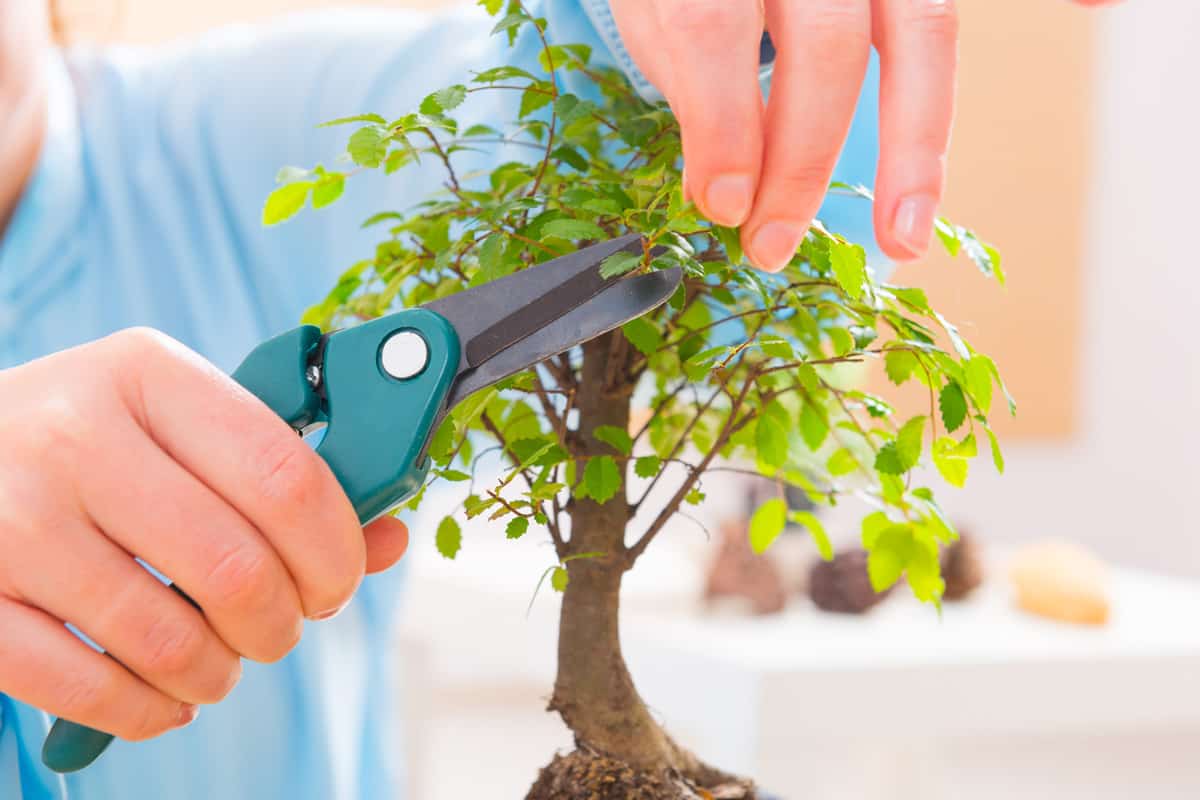Bonsai is a Japanese art involving miniature potted trees that has become very popular. Common bonsai trees can be very easy to find, but you may wonder how much one will cost to add to your home decor. We have researched this to help you know what you might expect.
On average, a new bonsai tree from any local nursery will be about $25. There are instances, however, where bonsai trees have been sold for more than a million dollars.
The age of the tree, its condition, and the container it is in all play factors in pricing a bonsai.
So, how can you tell if a bonsai tree is worth $50 or $50,000? Where can you purchase these beautiful works of art? Are there bonsai species that work better in pots than others?
Keep reading to learn about the financial variables surrounding the Japanese art of bonsai.

Average Price Of A New Bonsai Tree
Bonsai is a Japanese art involving miniature potted trees. Sometimes bonsai is confused with penjing, the Chinese art of creatively structuring plants, often in a diminutive landscape form. Some trees get passed on to the descending generation.
As a result, the value of this living art inflates. The other aspect that may affect the price is the pot it is in. The bonsai tree will be pretty expensive if the container is a delicately crafted clay bowl from several centuries ago.
The average price of a newly formed bonsai tree is roughly $25. The tree species will also factor in how expensive it is, but they are often made using easily accessible trees.
The prices will remain relatively low as there is a ready supply of trees like jacaranda, fiscus, weeping figs, and so on. If someone is selling a jasmine white pine bonsai tree, you will see the prices increase.
Average Price Of A 50-Year-Old Bonsai Tree
There are a few different answers to this question because the quality of the tree and the species matter. For example, a new, pristine bonsai may be worth more than a half-alive 50-year-old tree.
In higher-quality species, the average cost is just over $3000. For a common juniper or fiscus, you're looking at around $1000.
Most Expensive Bonsai Trees In History
At $91,000, the Fiscus Retusa Linn is one of the most expensive bonsai trees in history. This tree is more than a thousand years old. It lived in China for the majority of its life.
Then, after decades of contemplation, China shipped the Fiscus bonsai to Italy. Today, this beautiful, ancient tree found home in the Crespi Bonsai Museum of Italy.
Another notoriously wealthy tree is the Yamaki pine tree. While this tree is not as old as Fiscus Retusa Linn, the history of this tree is what increases its value. It is just under 400 years old, although it is estimated to be worth a million dollars! What's the big story behind this tree?
The Yamaki pine tree survived the 1945 atomic bombing of Hiroshima. In 1976, Japan gifted this bonsai tree to the United States as gift for America's 200th anniversary.
Lastly, and possibly the most valued bonsai tree in history: A 2000-year-old juniper tree. Yes, just a juniper tree, not a fancy species or anything too special.
Tests were performed on the tree to determine its age, and it has since found residence at the Mansei-en Bonsai Nursery. While this artifact is not available for purchase, it would hypothetically be worth about two million dollars!
Why Are Older Bonsai Trees Often More Expensive?
It may not be too valuable for the first five years of a bonsais life. Once the tree is well established for 10-15 years, the value increases. This process happens because keeping a bonsai for more than ten years is not easy!
Constant delicate care is looked very highly upon. Not only do older bonsais sell for higher profit - even trees that look older tend to win more competitions and consequently sell for more!
Where Should You Purchase A Bonsai Tree?
While many bonsai plants are imported from Japan, it is essential to consider the carbon emissions that come as a result. In addition, due to international botanic laws, several plants must be quarantined before arriving at their new home.
The best alternative is to purchase bonsai trees and supplies from local nurseries! Be sure to ask where the nursery sources their trees. If they are flying flyfrom Japan weekly, check out a nursery a few blocks over instead.

You can support your community's economy by purchasing ethically sourced plants from small businesses. When this is unavailable, any chain of gardening and home supply stores should carry bonsais.
For example, Home Depot's nursery is stocked with bonsai trees ready to go home!
What Makes Japanese White Pine Bonsai Trees Special?
Many of the most famous bonsai trees are Japanese white pine trees. It is a more dense tree than most, and it grows in a pyramid shape. This evergreen can reach up to 80 feet tall when planted regularly.
Surely it wouldn't get that large in a bonsai pot! The bonsai branches often move slightly outward and provide a layered look.

Here is a glorious image of a 70-year-old Japanese white pine.
Something interesting about this species of tree is how frequently it wins first place in bonsai competitions! Well taken care of, Japanese white pine trees sell for an exponential cost compared to the average juniper.
Well, there is a reason for that! The Japanese pine family is made up of yatsubusa plants. This is a group of plants with beautiful, dense, compact interior branching.
The word yatsubusa means small and many-budded. As a result of displaying these desirable bonsai characteristics, the plant has become popular in art!
What Is Decandling A Bonsai Tree?
Decandling is the practice of removing spring shoots from pine trees to promote alternative growth. This technique was developed to stimulate back bud growth. Those pine shoots are essentially what create the bonsai tree's shape.

You might also be wondering why we specified spring shoots. Summer shoots are often smaller and produce more branches than spring shoots. By removing the spring growth, you are encouraging more summer growth.
For example, three malleable, shorter sprigs will develop in place of the one spring twig that grew.
Here is an example of a bonsai toolkit on Amazon.
Do Bonsai Pots Hold Significance?
A bonsai tree will likely be in a temporary pot when it is still in its beginning training stages. Many of them look similar to the ones below.
View these training pots on Amazon.
However, when the tree is ready for a larger and more appropriate home, it should move into a nice pot. The container should have proper drainage control and enough room for the roots to spread out.
A good rule of thumb is to pick a bonsai pot that is 2/3rds the height of the tree. The pot should also be smaller in width than the length of the branches.
Of course, these rules don't apply as much when you first purchase a bonsai plant. Keep an eye on it and do what feels right for the tree's health.
In terms of cultural significance, the bonsai pot is as important as the tree. Different materials can be used, such as clay, porcelain, bamboo, and ceramic.
It is a good idea to pick the container that reflects the bonsai's behavior, traits, or history. There are also not too many brightly colored or neon pots.
This may be because people believe bonsai represents harmony and meditation. For these reasons, there are more neutral and Earth-toned bonsai pots.
Find bonsai pots on Amazon here.
Concluding Statements

We hope we have inspired you to seek out a bonsai plant! Whether you are interested in caring for a new bonsai tree or attending an auction for an ancient one, you have our support!
Remember, old trees aren't worth anything if they aren't well kept! If you enjoyed this article, visit our other posts on bonsai trees down below.
When in doubt, consult your local nurseries. Finally, enjoy the balanced Japanese art of bonsai.
Why Is My Bonsai Tree Trunk Squishy? [And What To Do About It]



